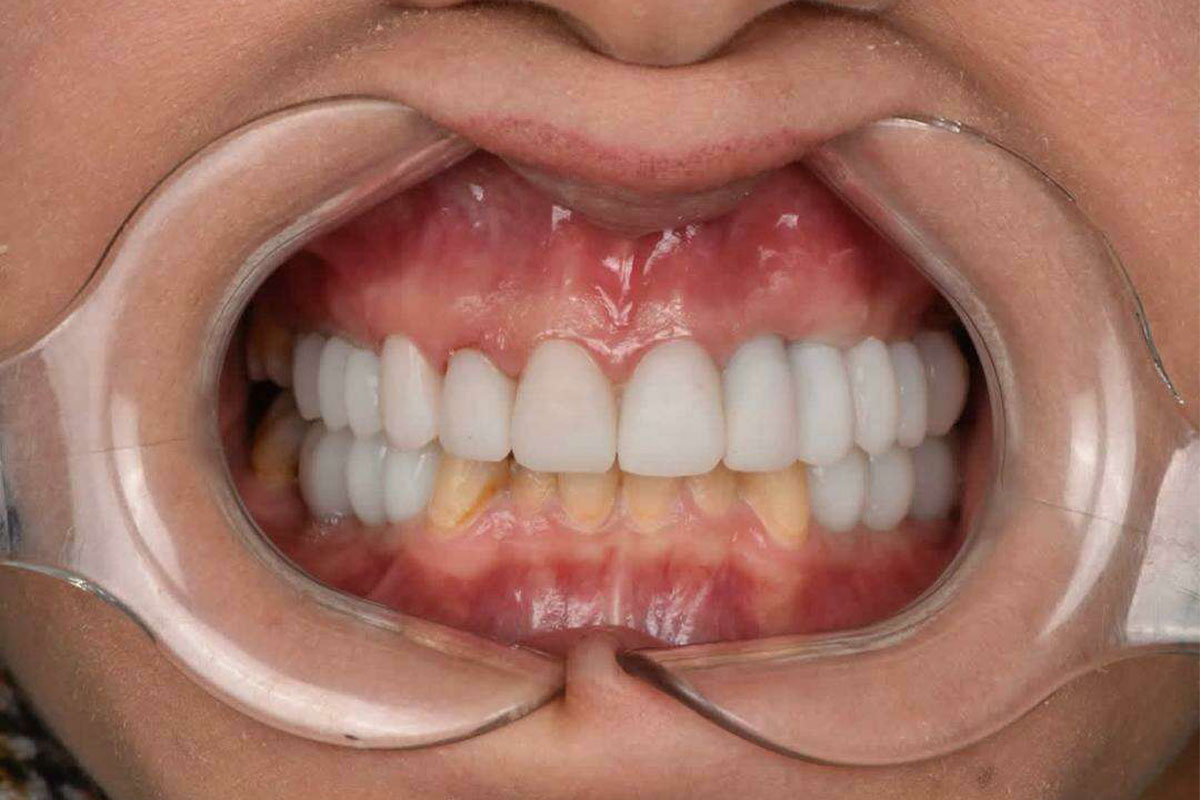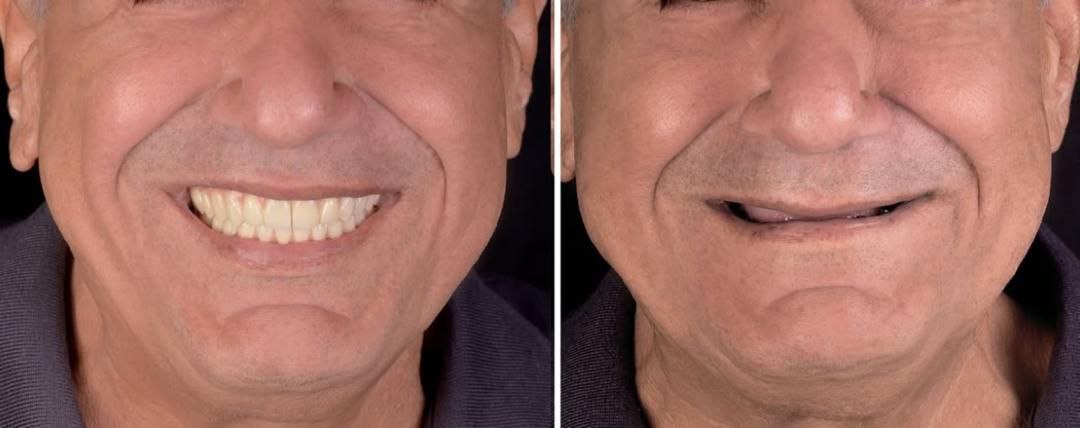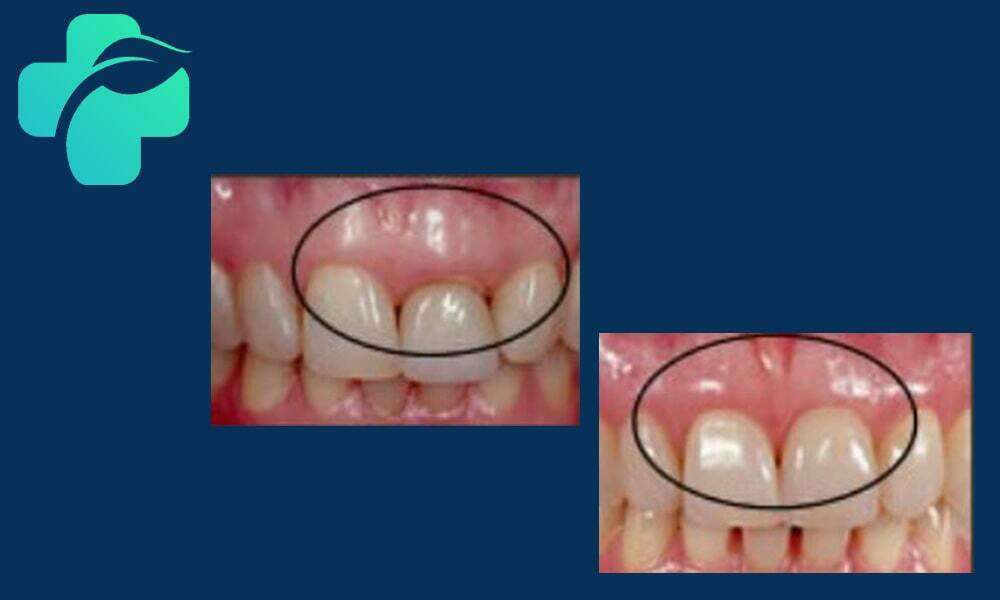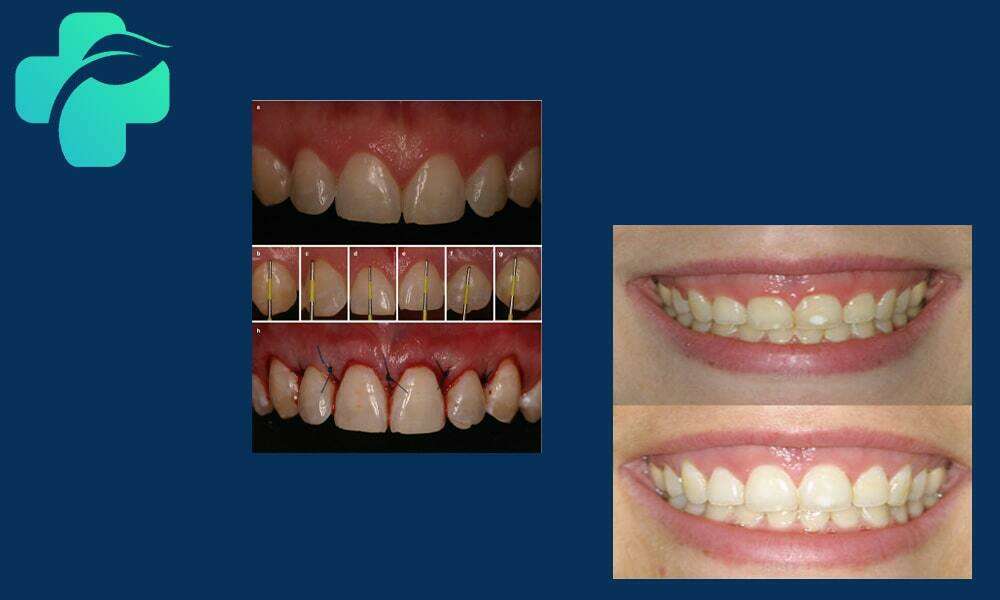Crown lengthening surgery services
Crown lengthening surgery is considered one of the important procedures in restorative and cosmetic dentistry, playing a significant role in various dental treatments and improving the appearance of the smile. This surgery is performed with the goal of increasing the visible portion of the tooth crown to provide better conditions for treatments such as crowns, fillings, or the correction of fractured teeth.
Below, we will become more familiar with the principles of crown lengthening surgery, its benefits, techniques, and post-operative care.
How is crown lengthening surgery performed?
Crown lengthening surgery is a procedure in which gum tissue—and sometimes the underlying bone—is removed or repositioned to expose more of the tooth’s crown. The goal of this surgery is to create sufficient space for dental procedures such as crowns, fillings, or even veneers. It is commonly used in cases of deep decay, tooth fracture, or when there is a need for a stable foundation for crowns.
Different techniques of crown lengthening surgery
Various techniques can be used for crown lengthening surgery, depending on the tooth’s condition, gum health, and bone structure:
Classic gingival surgery: Removing excess gum tissue around the tooth and reshaping the gums to make the crown more visible.
Crown lengthening with bone removal: Removing part of the bone surrounding the tooth to increase the crown height.
Laser treatment: Using laser technology to adjust the gum position without extensive incisions, allowing for faster tissue recovery.
Benefits of crown lengthening surgery
This surgery offers numerous advantages that help maintain dental health and facilitate restorative treatments:
| Benefit | Practical Explanation |
|---|---|
| Increased strength of crowns and fillings | By extending the visible tooth crown, crowns are better anchored and fillings are less likely to fall out. |
| Preservation of damaged teeth | In cases of deep decay or fracture, this surgery allows for restoration and preservation of the tooth, reducing the need for extraction. |
| Improved smile aesthetics | Reducing gum visibility and balancing tooth length enhances facial attractiveness. |
| Correction of gum problems | When gum irregularities such as inflammation or infection are present, crown lengthening can improve gum health. |
Post-operative care for crown lengthening surgery
Proper post-surgical care accelerates healing and prevents possible complications. Some key recommendations include:
Regular use of prescribed anti-inflammatory medications and antibiotics to reduce inflammation and prevent infection.
Avoiding hard or chewy foods for at least one week after surgery.
Maintaining oral hygiene with gentle and careful cleaning, especially around the surgical area.
Avoiding smoking and strenuous physical activity during the initial recovery days.
Visiting the dentist for follow-up appointments and suture removal if needed.
Cost of crown lengthening surgery
The cost of this surgery varies depending on several factors, including the surgical technique used, the dentist’s expertise, clinic location, and case complexity. On average, the cost of crown lengthening surgery in Iran is generally more affordable compared to many other countries, typically ranging from a few million tomans. For accurate cost details and consultation, it is recommended to visit specialized dental clinics.
Conclusion
Crown lengthening surgery is an effective and essential approach in many restorative and cosmetic dental treatments. It helps preserve damaged teeth and enhances the appearance of the smile.
Selecting the appropriate surgical method based on each patient’s unique condition, along with proper post-operative care, is crucial for achieving optimal and lasting results. Additionally, considering the costs and consulting with a specialized dentist are important steps toward making an informed decision.






Frequently asked questions about dentin lengthening surgery
Is crown lengthening surgery only applicable to decayed teeth?
No, in addition to treating decayed teeth, this surgery is also performed to improve the aesthetics of the smile, correct gum abnormalities, and prepare for implants or crowns.
Is crown lengthening surgery painful?
This surgery is performed under local anesthesia and you will not feel any pain during the procedure. Mild to moderate pain may be controlled with prescription medications after the procedure.
How long after surgery can a crown or filling be done?
A crown or filling should usually be placed 4 to 6 weeks after surgery, when the gums have fully healed.
Is it possible to restore the previous condition of the tooth crown?
If post-surgical care is done well, the changes will be permanent and the tooth crown will remain in its new condition.
Can anyone have crown lengthening surgery?
A candidate for this surgery must have good gum health and the condition of the bones around the teeth must be such that surgery can be performed. A careful examination by a dentist is decisive.



